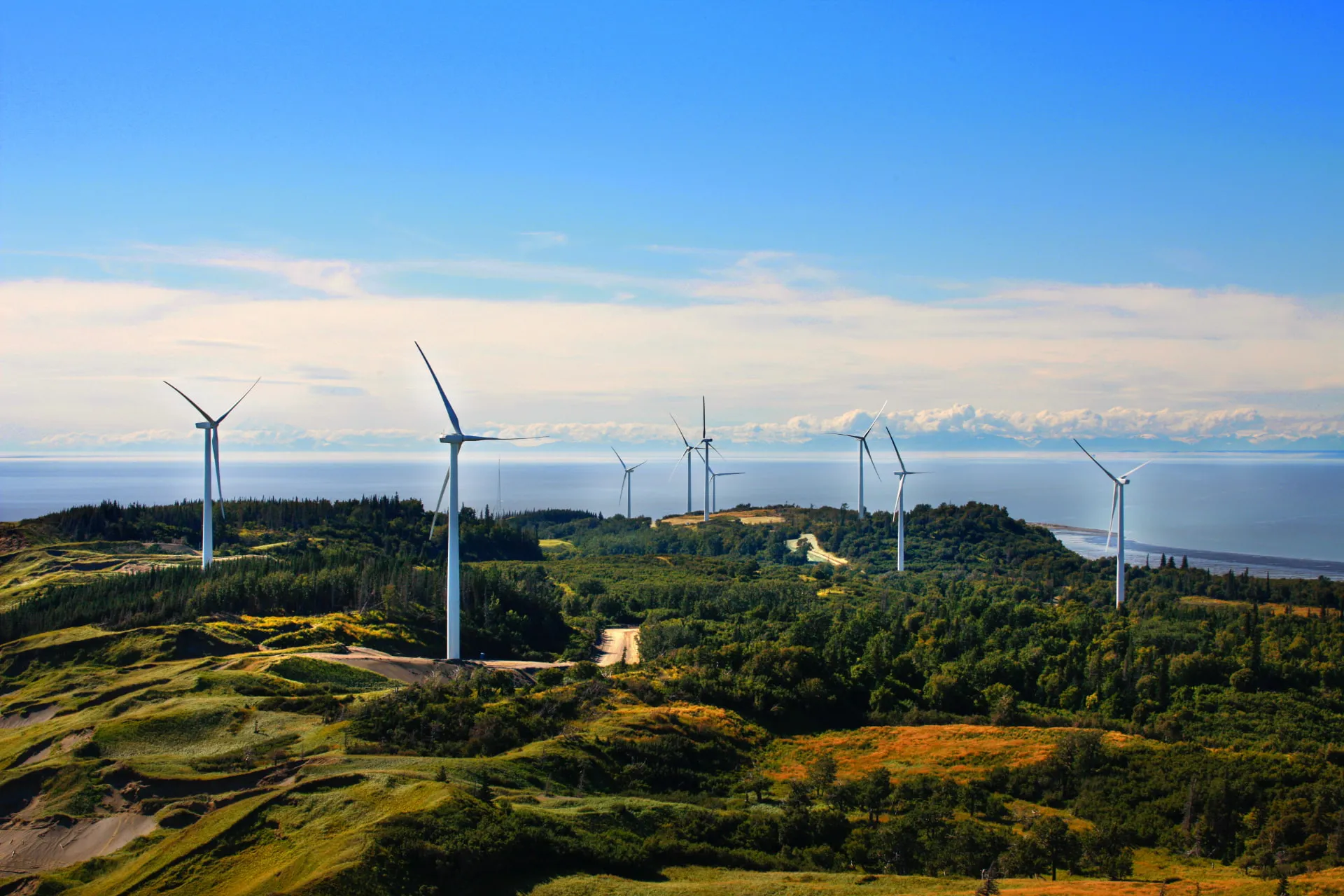Delivering clean, renewable energy to Southcentral Alaska
Fire Island Wind
Sustainable wind energy for the Last Frontier
500 million cf
natural gas savings per year
50,000 MWh
hours per year
7,000+ homes
capacity to power
Redefining What's Possible in Cook Inlet and Beyond
Since 2012, CIRI's Fire Island Wind Project has delivered renewable, emissions-free energy, with the capacity to power more than 7,000 homes in Southcentral Alaska. Fire Island Wind represents the area’s first utility-scale independently owned wind project.
- The project consists of eleven General Electric XLE 1.6-megawatt wind turbines
- Diversifies Southcentral Alaska's power-generation resources by producing clean, renewable energy
- Long-term purchase agreement with Anchorage utility Chugach Electric, improving power-price stability
Strengthening Anchorage's Economic Landscape
Three Miles Off the Coast of Anchorage
The Fire Island Wind project is an important step toward energy diversification in the Cook Inlet region, providing a reliable source of electric power to Southcentral Alaska. The project location was ultimately chosen for its prevailing wind conditions, proximity to the existing Railbelt power grid and minimal environmental impacts, among other factors.
Generating
Emissions-Free Energy

11 GE XLE 1.6 MW Generators
Hub Height
262 feet (80 meters)
Turbine Blades
Three blades at 131 feet (40 meters) each
Rotor Diameter and Swept Area
271-foot (82.5 meters) rotor diameter and a swept area of 1.32 acres (5,345 square meters)
Active Yaw and Pitch Control
The yaw control steers the machine with respect to wind direction and blade pitch control regulates the turbine speed
Experienced Industry Experts
In 2023, Fire Island Wind was awarded the Groundbreaking Community Wind and Sustainable Energy Project award from the Distributed Wind Energy Association.

Energy Infrastructure
Fire Island Wind was the area's first utility-scale independently owned wind project, and it helped redefine the future of energy in Cook Inlet and beyond.
01
Operational Excellence
In 2016, Fire Island Wind was lauded by General Electric Company as one of the top four wind energy projects in the U.S.
02
In-House Expertise
The turbines receive routine and emergency care from a maintenance crew that regularly visits the island.
03


Have a few questions? Contact us
Our Community and Future
As an Alaska Native corporation, CIRI recognizes we have a duty to continue responsible stewardship of our lands.
Energy
Capable of powering 7,000 Anchorage homes; eliminates up to 500 million cubic feet of natural gas consumption annually.
Sustainability
Produces long-term, local economic benefits by giving residents and businesses access to sustainable, stable-priced power.
History of Fire Island
- The Dena'ina Athabascan name for Fire Island is Natul'iv, which means “object that stands in the water.”
- Fire Island's modern-day name comes from Captain James Cook and his 1776-1778 Northwest Passage expedition. After sailing into Tikahtnu, later dubbed “Cook Inlet,” Cook sent some of his men to explore an island near what is today the city of Anchorage. They built a fire there and ate. Because the fire served as a beacon to Cook, he dubbed the stretch of land “Fire Island.”
- According to a Dena'ina Elder, a village once existed on Fire Island, but an epidemic forced the survivors to evacuate sometime before 1934. Nonetheless, Fire Island was the site of Dena'ina fish camps from 1918 until the 1970s. From 1909 to 1955, the island was designated as a breeding ground for Alaska moose. During World War II, the U.S. Army used it as an observation point to guard against Japanese submarines.
- Sections of Fire Island were first utilized in 1951 by the U.S. Air Force (USAF). The Civil Aeronautical Administration, which later became the Federal Aviation Administration (FAA), installed navigational aids during the 1950s and 1960s as part of the Fire Island Force Station, which played a critical role in monitoring potential air threats during the Cold War. The station closed in 1969. In 1971, control of USAF land and facilities were transferred to the FAA. Most of the remaining station infrastructure has since been decommissioned.
- CIRI acquired Fire Island as a surplus federal property in 1982.
- CIRI currently owns 85% of Fire Island's 4,000 acres, with the rest belonging to the FAA and the U.S. Coast Guard.
Get In Touch
Have a few questions for Fire Island Wind? Fill out the form and we'll be in touch shortly.











